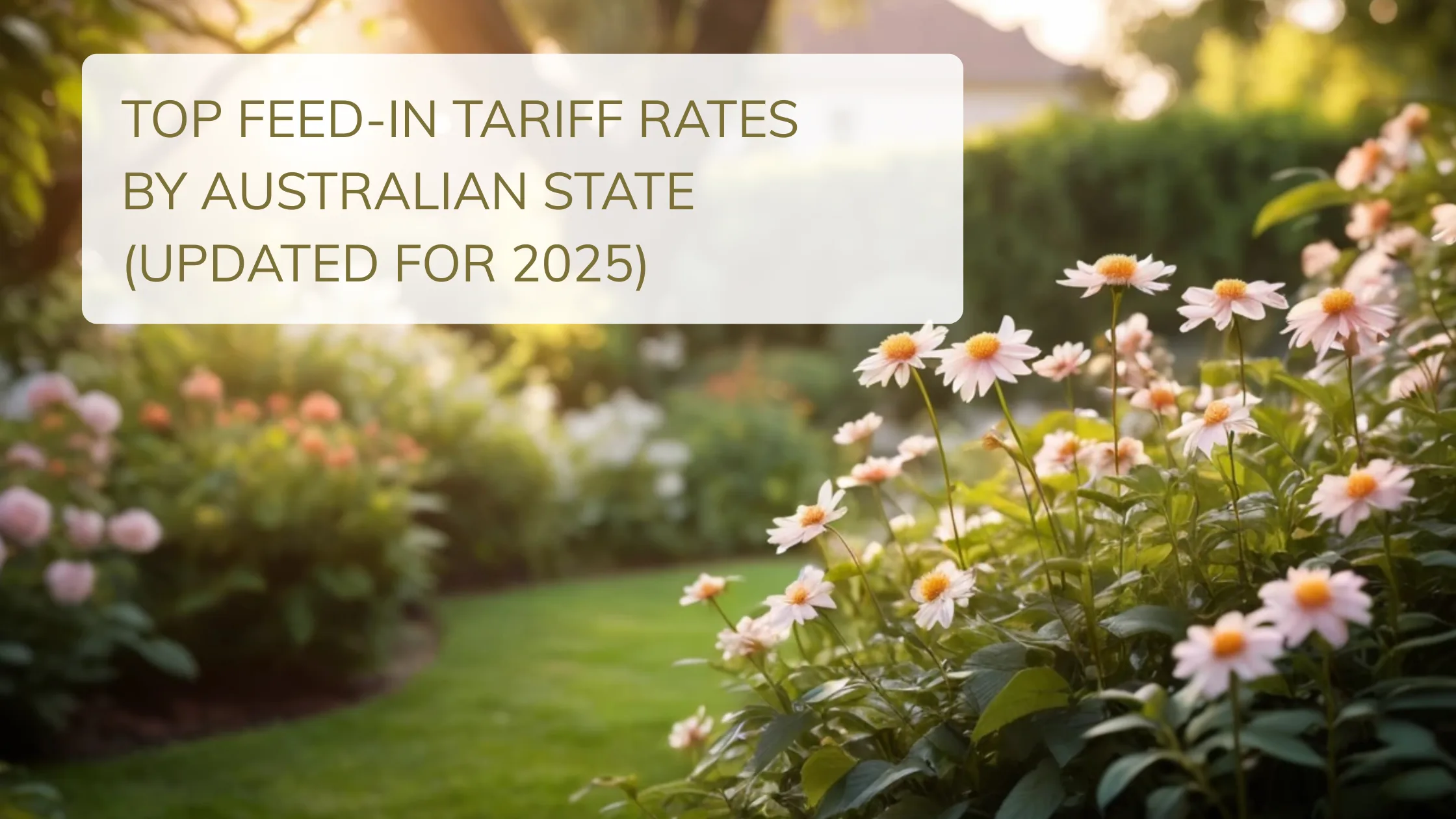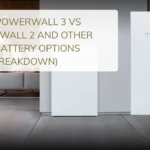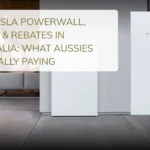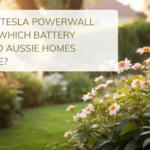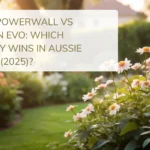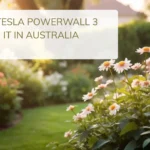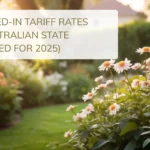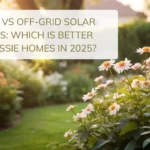Alright, let’s talk about one of the most misunderstood parts of going solar in Australia: feed-in tariffs.
You’d think it’d be simple — you sell your extra solar back to the grid, and they pay you for it. But no, it’s not that easy. Between state policies, different retailers, and ever-changing rates, it’s a bit of a circus.
When I first got solar in 2022, I honestly thought I’d be getting a cheque every quarter for selling energy back. Turns out, that’s not quite how it works anymore.
So if you’re wondering how much you’re actually getting paid for your extra solar in 2025 — or if you’re thinking of switching providers to get a better deal — here’s everything I found, broken down by state, plus a few real stories from around the country.
What Is a Feed-in Tariff (FiT), Anyway?
Quick refresher — a feed-in tariff is what your electricity retailer pays you for the solar energy you export back to the grid. It’s measured in cents per kilowatt-hour (c/kWh).
If you generate more than you use, the excess flows into the grid, and you get a credit on your bill. Easy on paper, but the rates and rules? Not so easy.
So… What Are the Best Rates in 2025?
Here’s a quick state-by-state comparison based on what’s currently available from major retailers. These are general retail FiT rates, not government-fixed ones — because most states don’t regulate the rates anymore.
| State | Typical FiT Range (2025) | Highest Reported Retailer Offer |
|---|---|---|
| NSW | 5c – 10c per kWh | Origin: 12c (conditions apply) |
| VIC | 5.2c (min) – 10c avg | AGL: 10c on select plans |
| QLD (SE) | 5c – 9c | EnergyAustralia: 10c |
| SA | 5c – 12c | Simply Energy: up to 15c (with usage conditions) |
| WA | 2.5c – 10c (DEBS) | Horizon Power (regional): 10c (limited hours) |
| TAS | 7.1c (regulated) | Aurora Energy: 7.1c (fixed) |
| NT | 9.13c (regulated) | Jacana Energy: 9.13c |
Note: Rates vary depending on your plan, region, and sometimes even time of day.
WA: A Bit Different (As Always)
Here in WA, we’ve got the DEBS scheme — that’s the Distributed Energy Buyback Scheme. They pay different rates depending on the time you export:
- 10c/kWh from 3pm–9pm
- 2.5c/kWh all other times
Basically, they want to encourage people to export energy in the late afternoon/evening when demand is higher. But unless you’ve got a battery, most of your energy gets exported before 3pm — meaning that 2.5c rate is what you’re stuck with most of the time.
My Feed-in Reality: Perth Example
Here’s my real breakdown from last quarter (Autumn 2025):
- Total energy exported: 1,130 kWh
- ~80% exported before 3pm = 2.5c rate
- ~20% after 3pm = 10c rate
- Total FiT earned: $59.50
Would I call it “generous”? Not at all. But it still helps offset the bill — and with a battery, I could probably boost it by shifting more export to evenings.
Real Stories from Around Australia
Mick – Brisbane
I’m on AGL’s 8c plan right now. Not bad, but they dropped from 11c last year. Still, with my usage, I get around $90 credit most quarters.
Priya – Adelaide Hills
I switched to Simply Energy for the 15c feed-in… but they make you take a premium usage rate, so it kind of cancels out unless you’re exporting heaps.
Tom – Geelong, VIC
Feed-in tariff helps, but it’s not what it used to be. I used to get 66c back in the day — now it’s more like 7c. Times have changed.
Why FiTs Are Lower Now Than Before
Remember when people used to get 50–60c per kWh? That was thanks to generous government schemes that are long gone.
These days, solar is so common that there’s often too much energy being exported to the grid during daylight hours — especially in spring and summer. So retailers (and the grid) just don’t need all that excess power, which drives rates down.
Tips to Make the Most of Your Solar (When FiT Is Low)
- Shift your usage to daylight hours – Run big appliances like washers, dryers, and hot water during the day.
- Consider battery storage – Store daytime energy and export it during higher rate windows (like 3–9pm in WA).
- Shop around yearly – Retailers tweak rates often. Compare your plan annually.
- Size your system based on usage – Don’t oversize just to export. Use what you generate to offset bills directly.
Should You Chase the Highest Feed-in Tariff?
Honestly? Not always.
Plans with high FiTs often come with:
- Higher daily supply charges
- Higher electricity usage rates
- Limits on how much solar you can feed back
So make sure you do the maths — that “premium” FiT could end up costing more overall.
Final Thoughts: Is Feed-in Still Worth It in 2025?
Yes — but it’s not the goldmine it used to be.
It’s more like a small bonus for sending back your extra power. The real savings still come from self-consuming your solar — and that means smart usage habits during the day.
If you’re smart about appliance timing and pick a decent plan, you can still slash your bills by 60–80%, even with low FiT rates.
Want a Free Feed-in Tariff Comparison Sheet?
I’ve made a simple spreadsheet comparing 2025 FiT rates across major Australian retailers, including usage fees and conditions. If you’d like a copy, just drop a comment or message me.
Let’s squeeze every cent out of that rooftop sunshine.
